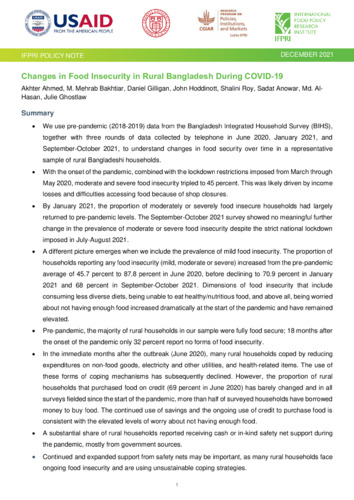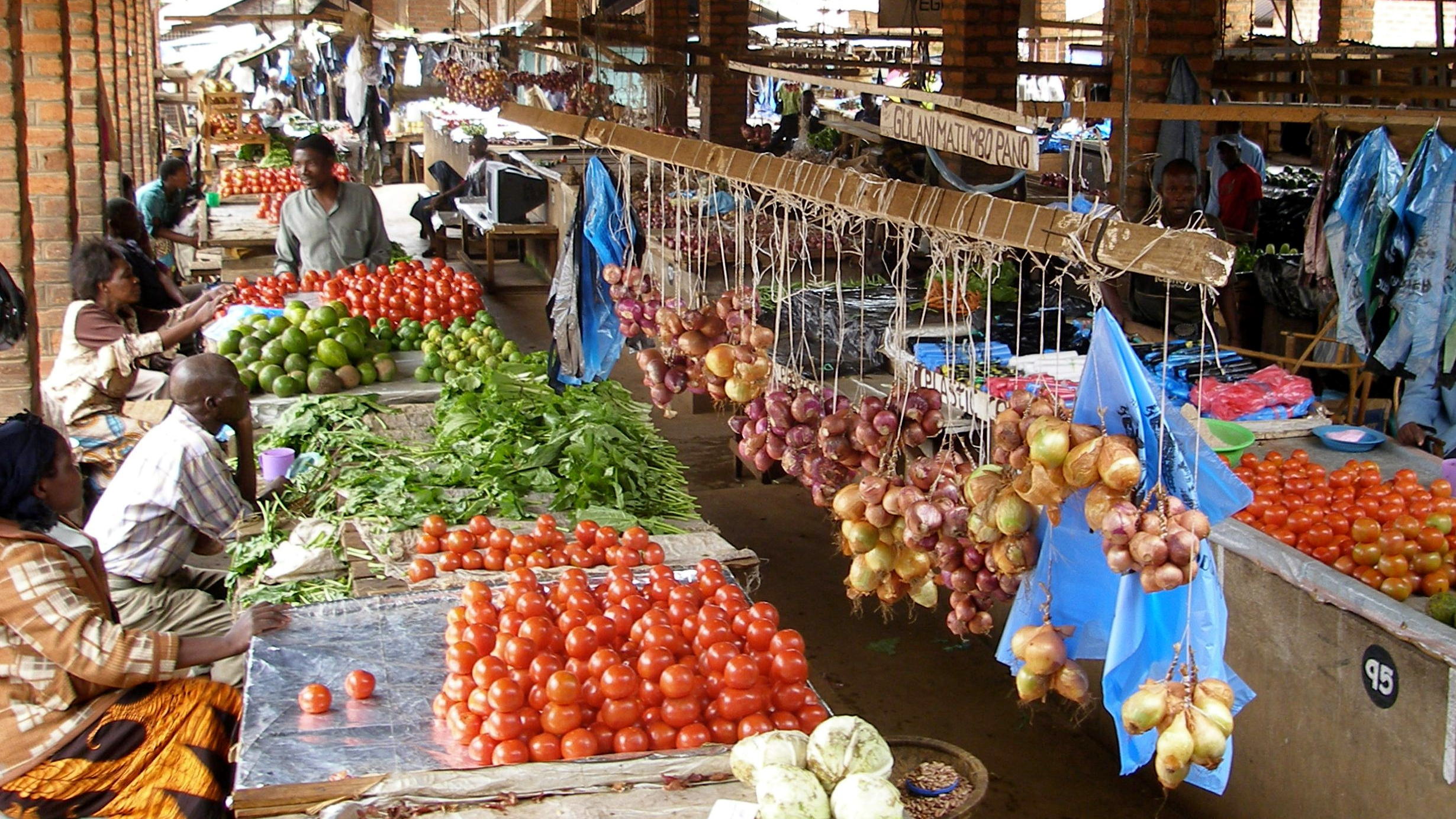Changes in food insecurity in rural Bangladesh during COVID-19
We use pre-pandemic (2018-2019) data from the Bangladesh Integrated Household Survey (BIHS), together with three rounds of data collected by telephone in June 2020, January 2021, and September-October 2021, to understand changes in food security over time in a representative sample of rural Bangladeshi households. • With the onset of the pandemic, combined with the lockdown restrictions imposed from March through May 2020, moderate and severe food insecurity tripled to 45 percent. This was likely driven by income losses and difficulties accessing food because of shop closures. • By January 2021, the proportion of moderately or severely food insecure households had largely returned to pre-pandemic levels. The September-October 2021 survey showed no meaningful further change in the prevalence of moderate or severe food insecurity despite the strict national lockdown imposed in July-August 2021. • A different picture emerges when we include the prevalence of mild food insecurity. The proportion of households reporting any food insecurity (mild, moderate or severe) increased from the pre-pandemic average of 45.7 percent to 87.8 percent in June 2020, before declining to 70.9 percent in January 2021 and 68 percent in September-October 2021. Dimensions of food insecurity that include consuming less diverse diets, being unable to eat healthy/nutritious food, and above all, being worried about not having enough food increased dramatically at the start of the pandemic and have remained elevated. • Pre-pandemic, the majority of rural households in our sample were fully food secure; 18 months after the onset of the pandemic only 32 percent report no forms of food insecurity. • In the immediate months after the outbreak (June 2020), many rural households coped by reducing expenditures on non-food goods, electricity and other utilities, and health-related items. The use of these forms of coping mechanisms has subsequently declined. However, the proportion of rural households that purchased food on credit (69 percent in June 2020) has barely changed and in all surveys fielded since the start of the pandemic, more than half of surveyed households have borrowed money to buy food. The continued use of savings and the ongoing use of credit to purchase food is consistent with the elevated levels of worry about not having enough food. • A substantial share of rural households reported receiving cash or in-kind safety net support during the pandemic, mostly from government sources. • Continued and expanded support from safety nets may be important, as many rural households face ongoing food insecurity and are using unsustainable coping strategies.
Authors
Ahmed, Akhter; Bakhtiar, M. Mehrab; Gilligan, Daniel O.; Hoddinott, John F.; Roy, Shalini; Anowar, Md Sadat; Al-Hasan, Md.; Ghostlaw, Julie
Citation
Ahmed, Akhter; Bakhtiar, M. Mehrab; Gilligan, Daniel O.; Hoddinott, John F.; Roy, Shalini; Anowar, Sadat; Al-Hasan, Md.; and Ghostlaw, Julie. 2021. Changes in food insecurity in rural Bangladesh during COVID-19. IFPRI December 2021. Washington, DC: International Food Policy Research Institute (IFPRI). https://doi.org/10.2499/p15738coll2.134909. https://hdl.handle.net/10568/113289
Country/Region
Bangladesh
Keywords
Southern Asia; Asia; Surveys; Policies; Covid-19; Households; Food Security; Rural Areas; Pandemics
Project
Policies, Institutions, and Markets









